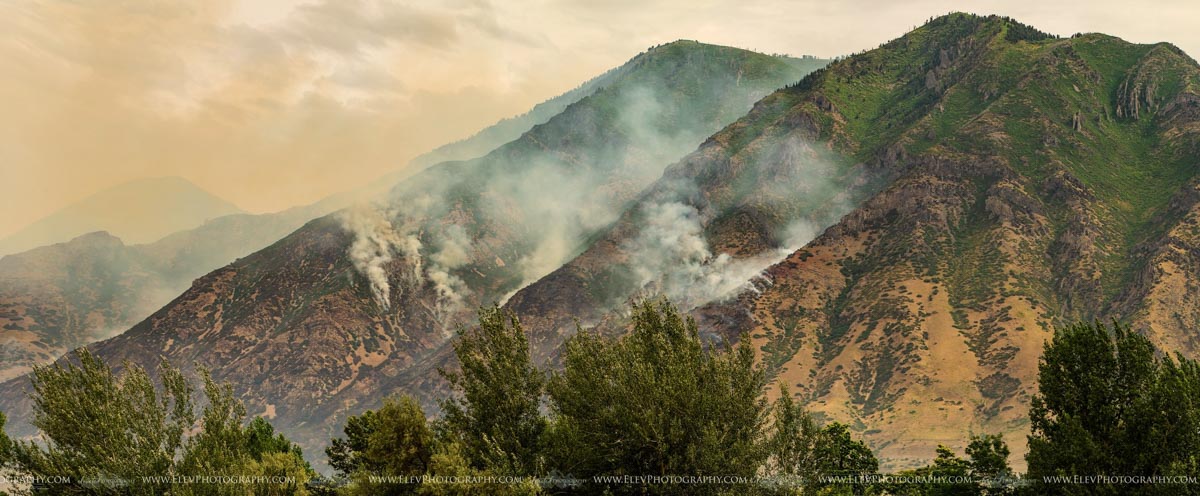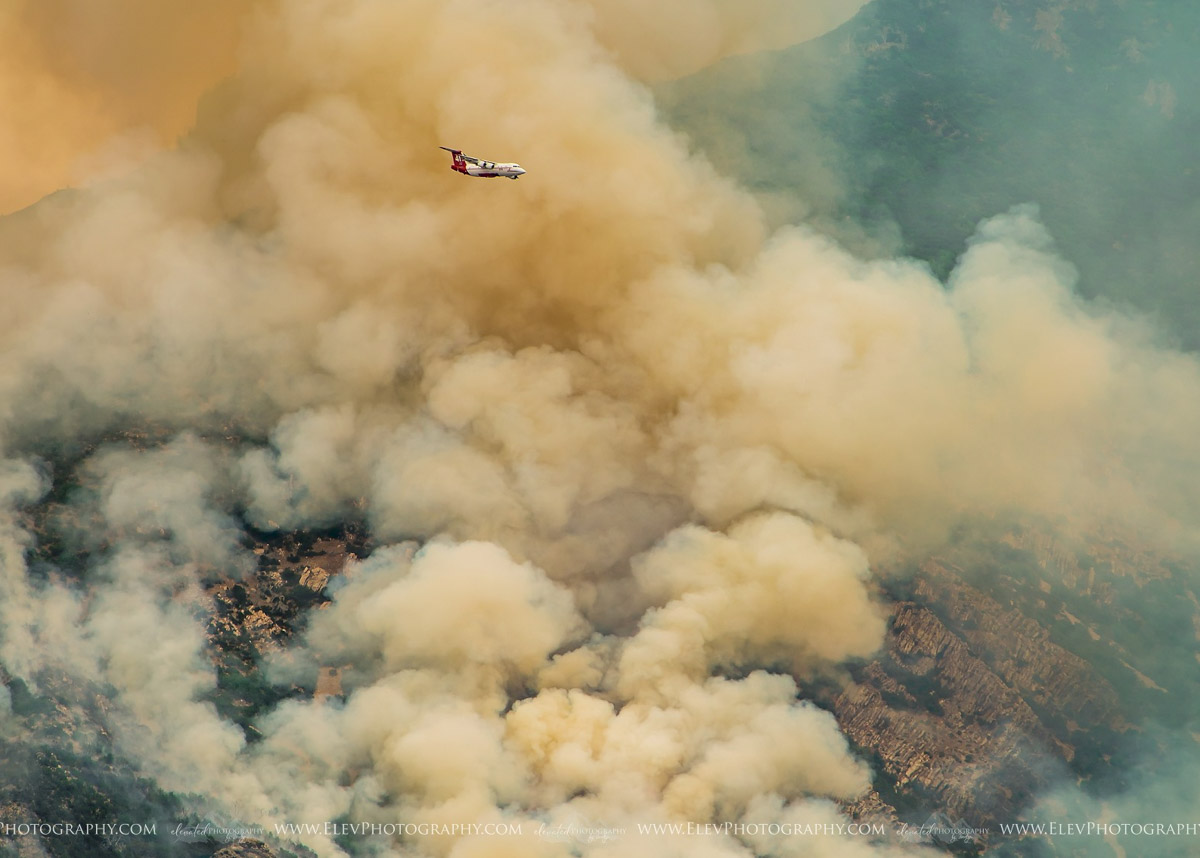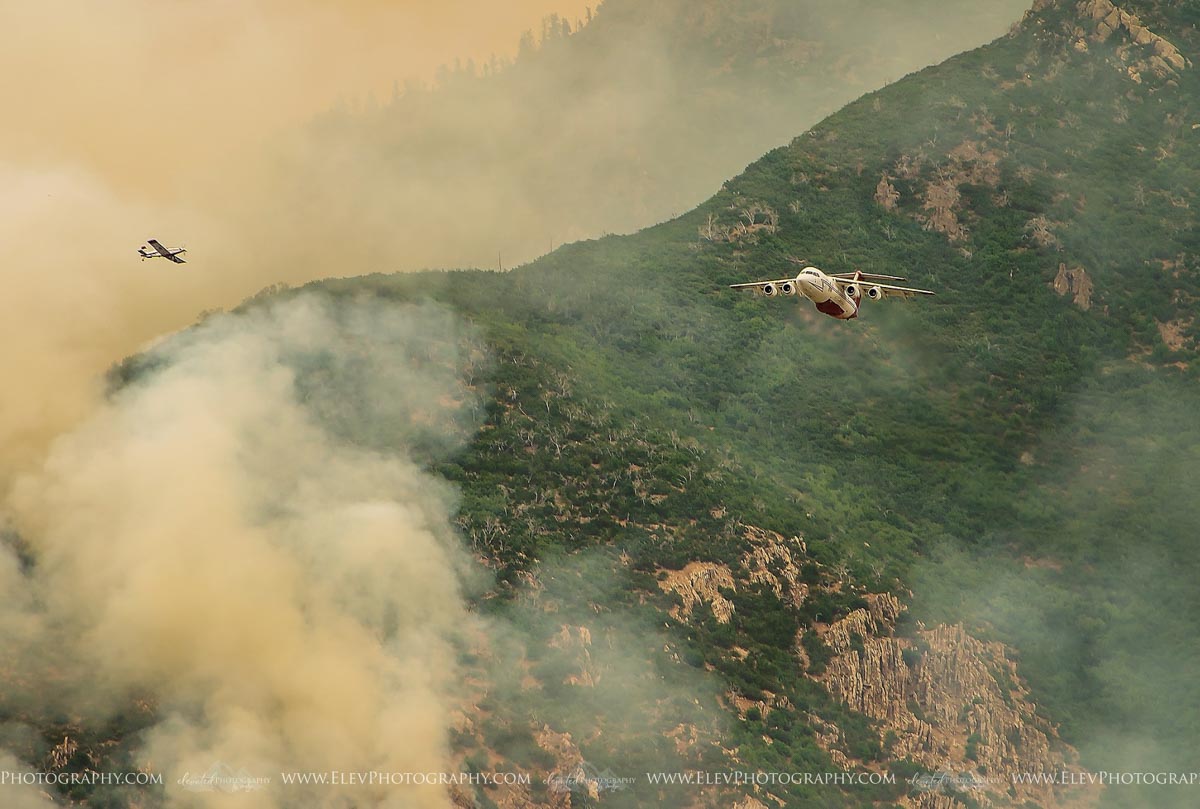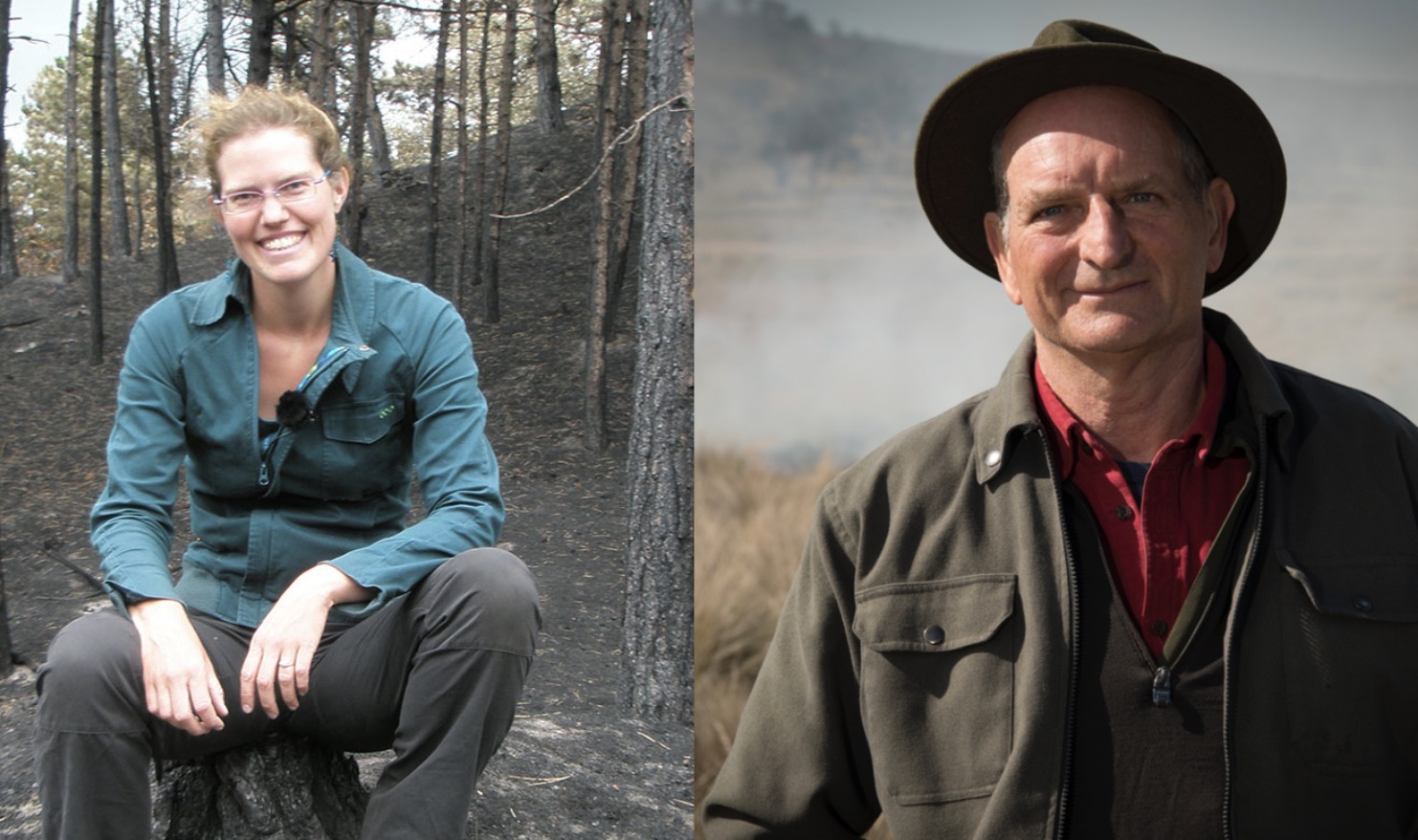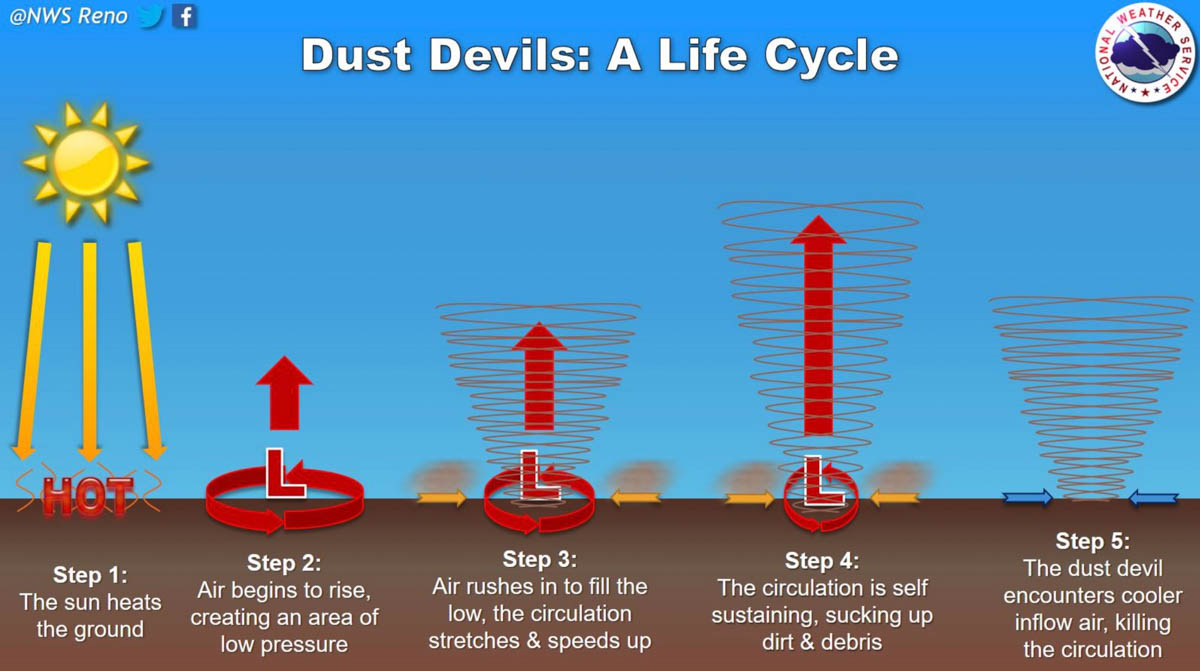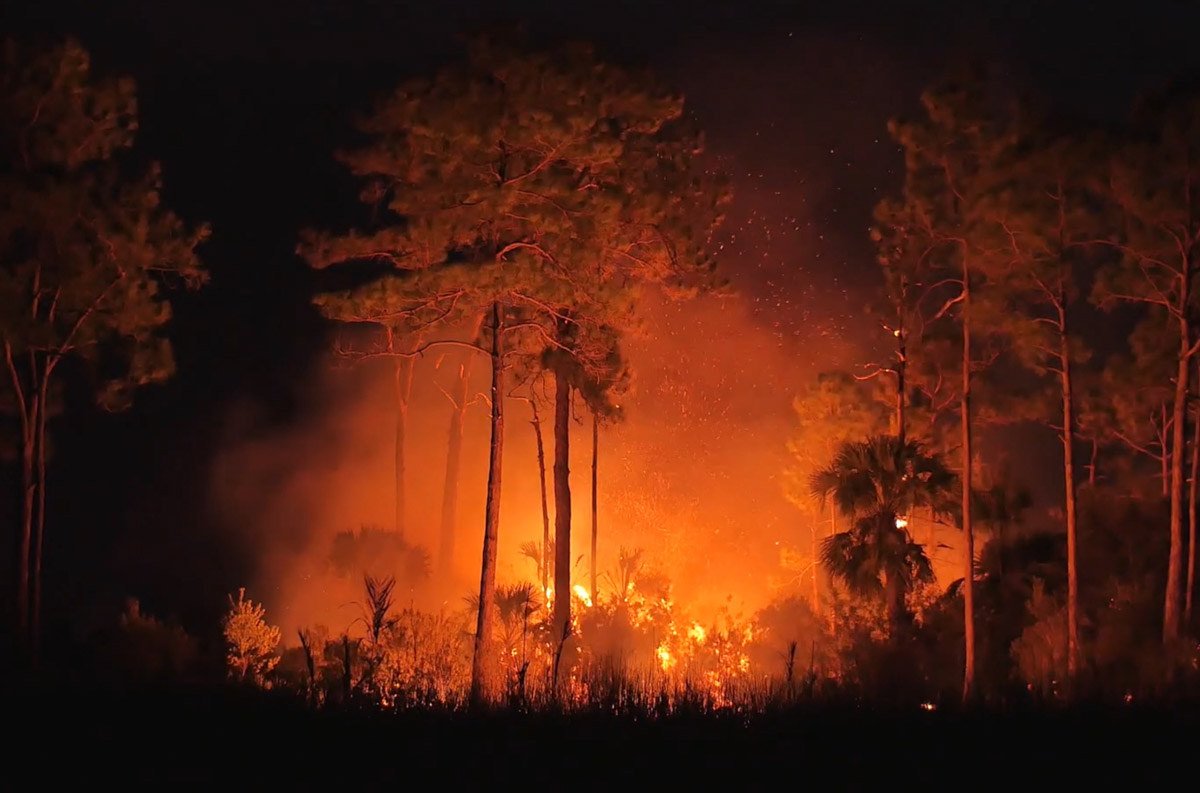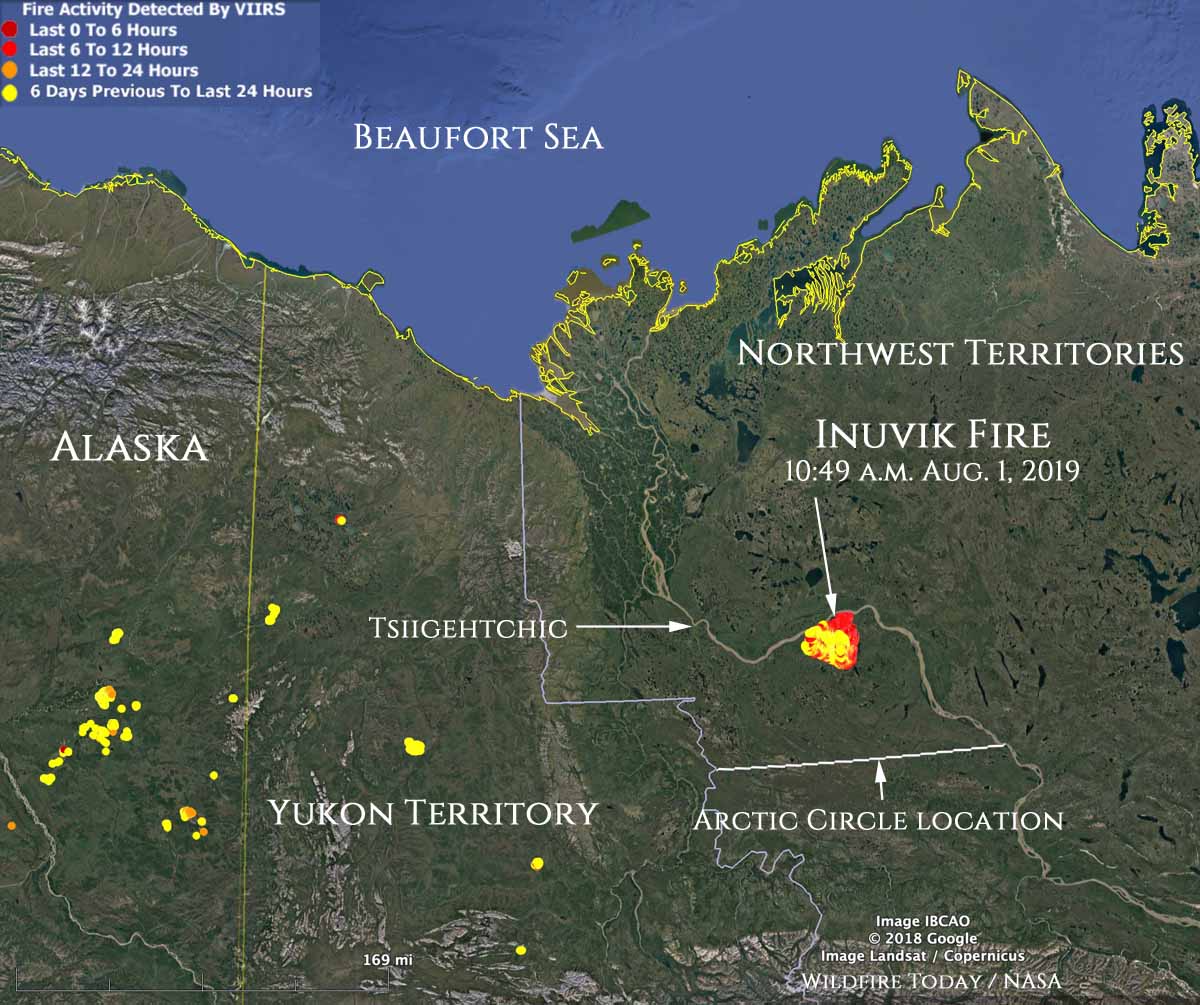
A wildfire in Canada’s Northwest Territories arctic has burned about 45,000 hectares (112,000 acres) according to the last size estimate by the Northwest Territories Environment and Natural Resources agency. Our very unofficial estimate based on satellite data collected Thursday morning showed that it has increased to approximately 60,000 hectares (150,000 acres).
The fire is burning along the Mackenzie River about 47 miles (77 kilometers) east of Tsiigehtchiceast. Presently there is no threat to that community, officials said. (see map above)
This is happening north of the Arctic Circle, at 67.3 north latitude. The Arctic Circle, which defines the southern boundary of the Arctic, is at 66.5 north latitude. Alaska has also had fires this summer in the Arctic and Russia has had many in the extreme northern latitudes.
According to NPR President Trump discussed the fire situation in Russia with Vladimir Putin:
President Trump spoke with President Vladimir Putin on Wednesday and offered U.S. help in fighting widespread forest fires raging in parts of Siberia, according to a Kremlin account of the call.
Putin, in response, expressed his “sincere gratitude” to Trump and said that if necessary, he will accept the offer, the Kremlin said on its website.


